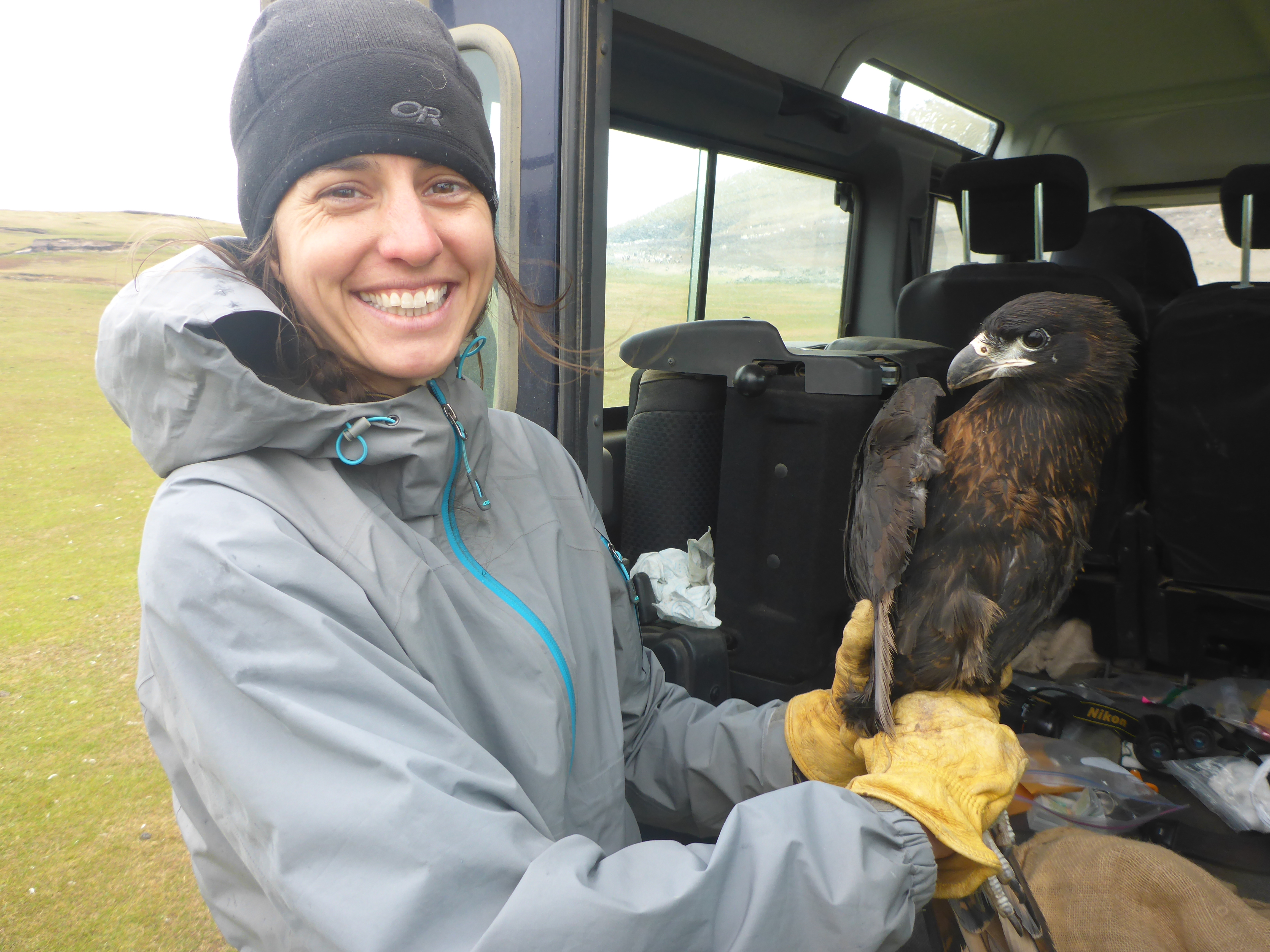Seasonal time-energy allocation of an island-restricted Falconid, the Striated Caracara, using a low-cost, open-source inertial movement GPS logger
A Thesis Defense by Katie Harrington
Thursday, July 11th, 2019 at 12 pm
MLML Seminar Room
Katie began research on striated caracaras in 2015 and has since took over leadership of a long-term research site begun by Hawk Mountain Sanctuary in 2010. Along with overseeing and implementing the expansion of a banding program and educational outreach to farmers and schoolchildren in the islands, Katie’s research has focused on striated caracaras’ seasonal movements, feeding ecology, and energy use. Katie is currently collaborating with researchers in mainland South America to study the population genetics of striated caracaras within and beyond the Falklands, and to support and encourage research into their little-known populations in Chilean and Argentine Tierra del Fuego.
Thesis Abstract:
According to life history theory, animals should have adaptive strategies to cope with seasonal fluctuations in resource availability. However, the introduction of human settlements to natural landscapes can affect the spatial and temporal patterning of resources and disrupt the naturally occurring resource variation to which an animal is adapted. Human subsidies impact animal populations by affecting their density, population growth rate, and abundance. Research has shown that island species dependent on human subsidies are more prone to population declines and local extirpations. While population level effects are known, little research has been aimed at individual level behavior and energy allocation effects. Here, I investigate the time-energy allocation and activity budgets of striated caracaras (Phalcoboenus australis), a scavenging and predatory Falconid in the Falkland Islands, a highly seasonal and human-subsidized environment. I developed the Tapered Wings Logger, a low-cost, lightweight inertial movement GPS logger, and made the logger design available for researchers and applicable across many systems. I deployed the loggers on caracaras to examine seasonal differences in time-energy allocation and activity budgets. The acceleration data were used to calculate overall dynamic body acceleration (ODBA, gravitational g), a proxy for energy expenditure, and to estimate behavioral state using hidden Markov models. I combined the GPS data with ecological knowledge of the species and study sites to help validate model results. Additionally, I investigated space use with daily distances traveled and home range kernel density estimates. My results suggest that on a daily scale, caracaras overwintering at a farm settlement worked 20% harder than in summer (24-hr ODBA: winter 2848.07 ± 577.26 g; summer 2380.85 ± 435.65 g [x̄ ± SD]). During daytime, hourly ODBA rates were nearly two times higher in winter compared to summer (winter 239.50 ± 51.61 g; summer 127.92 ± 26.01 g). Caracaras exhibited more intense activity in winter, spending twice as long in the high activity state compared to summer (winter 99.0 ± 45.2 min, summer 44.1 ± 26.1 min). In addition, during winter, caracaras traveled greater cumulative daily distances (winter 23.75 ± 7.50 km, summer 10.94 ± 3.29 km) and daily ranges were 13 times larger (95% KDE: winter 8.34 ± 11.04 km2, summer 0.64 ± 0.49 km2). This study emphasizes that even with human subsidies to cope with seasonal food availability, caracaras work harder in winter than in summer to obtain enough energy to meet daily requirements. Many island-restricted species will likely face increased variation in resource availability in response to environmental change and human population expansion. I suggest conservation managers consider these results for how to target their efforts to maximize the benefit during a critical life stage of a near threatened species.




